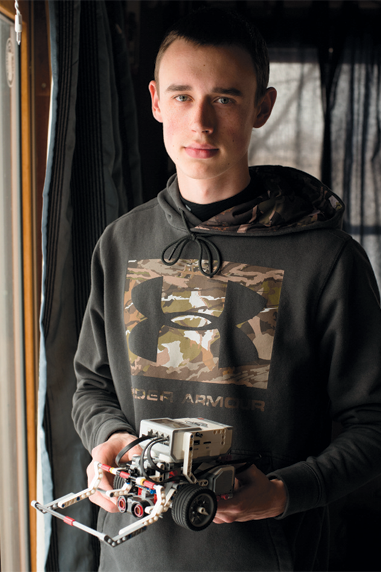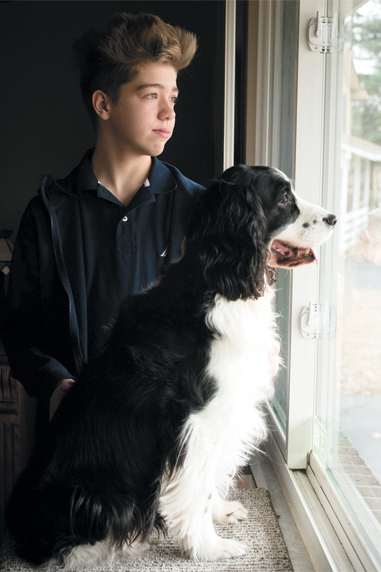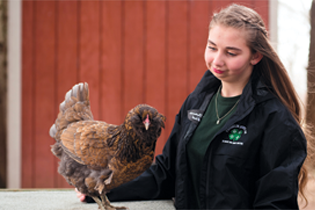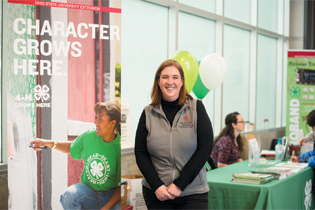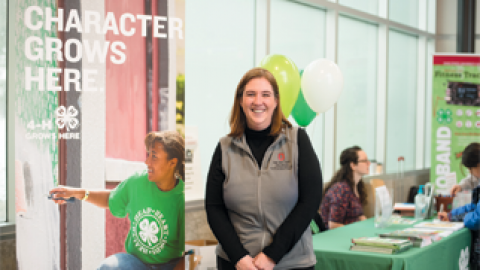A Place in the World
Somewhere in my parents’ home, in a box of mementos from that time, is an old newspaper clipping of one of my most cherished memories. Three generations of 4-Hers—my grandfather, father and I—at my first 4-H project judging at the county fair. That newspaper clipping, although aging and frail, represents the strength of 4-H: continual evolution in the opportunities it offers young people.
A program that helped my grandfather develop the tools he needed for success in the ‘40s did not look the same as it did for my father in the ‘70s, or me in the ‘00s, or my young cousins as we approach 2020. 4-H is a program for more than farm kids and has evolved to include opportunities for young people in rural and urban areas alike.
Let’s look at 4-H opportunities for young people in Franklin County.
Ohio 4-H serves more than 240,000 young people in Ohio with its non-formal educational programming, the core of which is organized into community clubs, which young people ages 5 to 19 can join. Clubs have been around since the beginning of 4-H in the 1900s, but their volunteer-led nature has allowed them to evolve and keep up with changing needs of young people. Club advisors, often parents and alumni, are trained and go through a seven-step screening process, including fingerprint background checks.
“Finding your community club is the first step in 4-H Involvement,” says Beth Boomershine, 4-H Youth development extension educator in Franklin County. “There you will work on your projects, do community service activities, project demonstrations, etc. Your community club is your home base for the 4-H experience.”
Franklin County has about 900 members in 40–45 clubs spread across the county, each with a fun name like the 4-H Dream Achievers, Groveport Buttoneers, Hilliard Lucky Live Wires or Whetstone 4-H’ers. Beth says most of the clubs have members with a wide range of project types, with a few clubs that are specifically for horse projects and a few for dog projects, two of the most popular projects along with chickens and rabbits, all of which are allowed in most Franklin County municipalities.
Clubs typically meet once or twice a month at community centers or members’ homes and are member-driven. The clubs’ elected officers, much like a board, run a business meeting using Robert’s Rules of Order. They then move into speaking demonstrations about their projects, community and service learning projects and have the opportunity to ask questions and prepare for their project judging at the Franklin County Fair. While this general structure of club meetings has existed for a long time, it has allowed clubs to remain relevant and flexible to the needs of their members. It is in these club meetings that the members begin to learn how to assume responsibility for themselves and their club and invest in relationships that often last a lifetime.
Of all my experiences as a 4-H member, club meetings were my favorite. Looking back, it was a unique opportunity to watch and experience these types of activities with a wide age range, much like it is in the real world. As a young member I looked up to the older members who were officers and running the meetings and then I got to take over as a leader and role model.
“Kids get the opportunity to become caring, contributing citizens who give back to their community, learn about public speaking, do service learning projects and experience being leaders,” Beth says. “Instead of just learning about it, they actually experience it.”
All of these experiences have been shown to cultivate “soft skills” in 4-H members: coaching, leadership, communication, empathy, critical thinking, problem solving, resilience, resourcefulness, decision-making, responsibility and discipline. A study of Michigan 4-H members published in the Journal of Extension, showed that 4-H helped young people develop soft skills, and that those skills aided them in the transition to college. Even Google has published research that shows that the top seven characteristics of success while working at Google are soft skills, and not the science, technology, engineering and math (STEM) skills they had been emphasizing.
“I learned how valuable it is to show up to an event on time, and how much just a little bit of work can do to one’s opinion of you,” says Jacob Garrett, a 17-year-old member of the Groveport Buttoneers. “4-H has taught me how to take responsibility when I need to, and I carry this with me all the time. At school, at home and in public.”
While 4-H members are learning and developing those soft skills, they are also exploring other hands-on skills and interests through their projects. In the early years, 4-H was largely for rural youth, because much more of the population was rural. But as more people moved to cities and suburbs, 4-H has shifted to meet the needs of its members. This history has left behind a bit of a stereotype that 4-H is for farm kids to show their pigs and cows, which couldn’t be further from the truth. There are more than 200 different projects available for members to explore, and most members take more than one, and often more than two different projects each year; from aerospace to zoology, fashion to STEM, livestock to cooking and baking and so much more, including the opportunity for Self-Determined Projects.
“I coordinated the Franklin County Farm Bureau animal/educational area at the fair last year,” says Brooke Fleshman, a 15-year-old member of Fantastic Futures. “It was a huge undertaking and came with countless life lessons.”
I have many friends from my time in 4-H I can look at now and see exactly how their projects and the associated life lessons influenced their lives. From my cousin who took many sewing projects and now makes costumes for community theater productions in her spare time, to my friend who took rocket projects to the fair and is now a literal rocket scientist at SpaceX—it is very clear the opportunities to explore through 4-H projects help young people discover their place in the world.
How to Join
Joining 4-H is much easier than it used to be. Beth says they have tried to make it as easy as signing up for soccer online. Visit the 4-H section at franklin.osu.edu. There you will find a list of clubs with all the information you’ll need to find the best fit or be a part of the continual evolution of 4-H and start your own club.
4-H Walk & Serve: April 7, Franklin County Fairgrounds in Hilliard
4-H clubs have adopted nonprofits and will be coordinating a station to make items needed by each organization; i.e. dog and cat toys, nonperishable food packages, rice sock heating pads. The April 7 event is open to the public for people to join the 4-H members in giving back to the community. Visit franklin.osu.edu/events/4-h-walk-and-serve for more information.
Franklin County, Ohio, and National 4-H Opportunities Beyond Clubs
Joining 4-H gives young people the opportunity to explore projects they’re interested in and learn how to be an active participant in their community. As they gain experience in 4-H, even more experiences become possible.
Here is a list of just a few of the state and national opportunities 4-H members can participate in each year beyond club involvement:
Franklin County 4-H Camp
Franklin County 4-H Poultry Clinic
Franklin County 4-H Teen Leaders Council
Franklin County 4-H Fashion Board
Franklin County Winter Project Fair
Franklin County 4-H Officer Training
Ohio 4-H Conference
Ohio 4-H Leadership Camp
Ohio Forestry & Wildlife Conservation Camp
Buckeye Leadership Workshop
Ohio State Fair Junior Fair Board
Citizenship Washington Focus
Leadership Washington Focus



